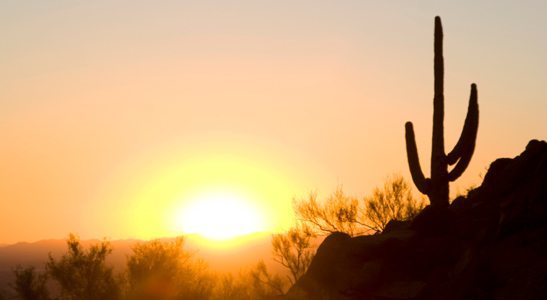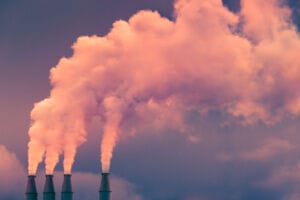With 2016 on track to surpass 2015 as the hottest year on record, the desert city of Phoenix has experienced some of its hottest temperatures.
State Climatologist Dr. Nancy J. Selover presides over Arizona’s climate information and has served the area in climate information for nearly 30 years. Selover says the impacts are being felt on a local level.
“Annual temperatures (for Arizona) are on the rise,” Selover said. “When I look specifically at the Phoenix area, I’m seeing a much, much greater increase in those temperatures, and that’s an impact of the urban development.”
Phoenix ranks third among the hottest cities in the U.S. with an annual temperature of 75 degrees. It is also second in fastest-warming cities, with an increase of 1.12 degrees per decade.
In addition to the temperature increase, Phoenix has experienced a season shift. On Feb. 17, Arizona reached its earliest 90-degree day.
“We’re seeing a move toward a longer growing seasons, and we you start to see that it tends to be accompanied by warmer conditions in the middle of the year,” Selover said. “It also means you have a longer season where plants are using water, so there’s an increase in natural water use by these warmer temperatures that’s just problematic.”
Phoenix is garnering national recognition for its climate driven problems. Bina Venkataraman served as senior advisor for Climate Change Innovation for President Barack Obama. Venkataraman’s efforts focused on community based resilience programs in the fight against climate change.
Venkatarman highlighted Phoenix’s issues, speaking to the difficulty of existing in a desert city.
“The issues in this area that we need to really reckon with are issues of water, population growth and drought that affect the whole region,” Venkatarman said.
Venkatarman’s main coalitions and polices centered on bridging gaps between scientific information and community efforts, Venkatatman stressed the importance of an awareness when it comes to climate change.
“Let’s make climate change information accessible so that people can make decisions about resilience, preparation and on how to reduce their carbon footprints,” Venkatatman said of her efforts. “If more communities, more industries, more cities, more people had a sense of how the risks of climate change would affect them that the magnitude of that could be a lot more powerful in how we influence and make decisions.”
Venkatarman and Selover both spoke to the contrasting nature of climate conversations, but emphasized the need for discussion.
“It’s not a conversation that you can just jump into, because half of the people don’t want to hear it,” Selover said. “If you want to engage those people in a discussion about what can we do to make all our environment better, you need to start on a personal level.”
“It’s polarizing in the political context to talk about climate change, but the reality is that this region is developed in a way that requires so many resources,” Venkatarman said.
Arizona State University’s Global Institute of Sustainability is a primary voice in the push for engagement in climate issues, and received a sixth place ranking on behalf of the Sierra Club’s Cool School’s list that ranks America’s greenest colleges.
ASU sustainability student Gracie Strasser lives in the Phoenix area and sees the effects of climate change around her. Strasser said despite living in an urbanized environment, the issue of climate change is one that should be prioritized.
“The fact that we live in a big city makes it a little harder to relate to the environment and green space, just because we don’t have a lot of it here,” Strasser said. “It’s one of the biggest issues our generation will have to deal with, probably the biggest issue we’ll have to deal with as we age, so I definitely think we need to make it more of a conversation.”
As temperatures continue to rise, the need for conversation and action has heighted both nationally and locally. Venkatarman said the time to act is now, citing negative repercussions for a lack of change.
“The question really becomes, with what we’ve created, how do we retrofit to become as sustainable as possible, how do we reimagine how we’ll continue to grow, and how do we do that in a way that looks through the windshield instead of the rearview mirror,” Venkatarman said. “The seas are literally rising; these are the things myths are made of.”




